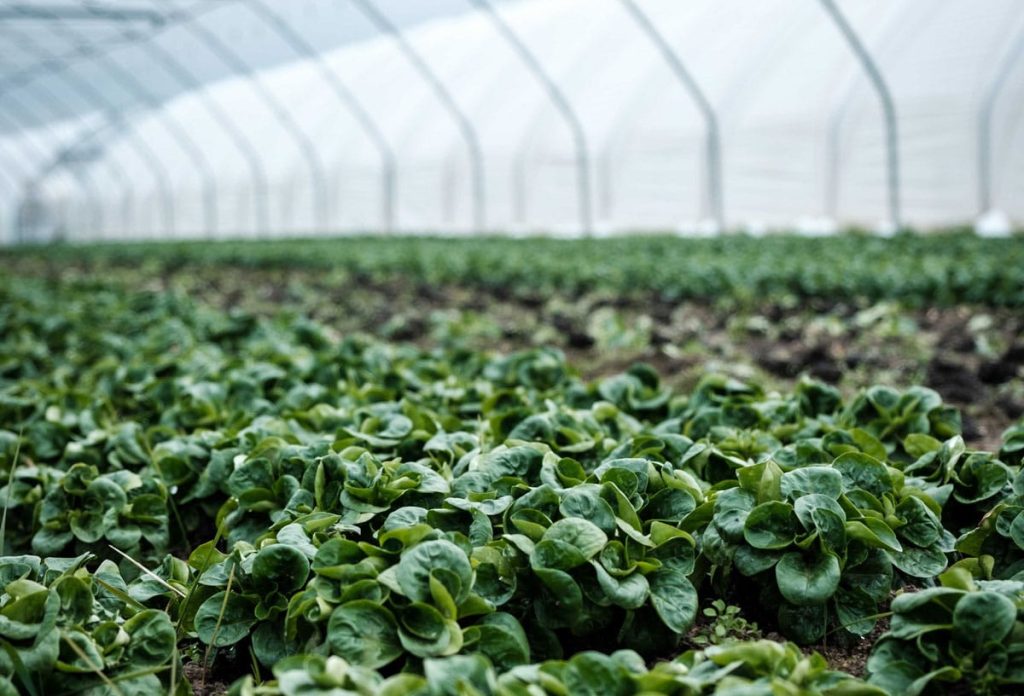How is fog or a very fine mist used for cooling a greenhouse?
At MicroCool we are often asked this question. Simply put: Heat that builds up naturally in the greenhouse is relieved through cooling when the fog evaporates into the air. Through evaporation, heat is removed from the air when the tiny fog particles change from a liquid to a gas. This phase change removes 970 BTU from the air for every pound of water the fog system evaporates. When you scale this out, evenly, over a large indoor area like a greenhouse, the fog cooling system removes millions of BTU of heat from the air. This provides the necessary cooling that many crops need to perform well. A 10 gallon per minute MicroCool system can provide over 400 tons of evaporative cooling. When applied properly, this creates an optimal environment that the industry’s top growers demand. As one MicroCool expert likes to point out, “We use an untapped form of solar energy to cool and humidify.”
Local Weather Conditions Must Be Analyzed
The first thing we look at are the local weather and atmospheric conditions for the location. To evaluate the possibility of cooling, it is imperative that the correct data be analyzed before making broad statements. Much of the reported data gives “average humidity” or “maximum humidity.” Averages are only helpful to an extent. Our greenhouse team, lead by Mark Stanley who has been in the irrigation and greenhouse industry for 40 years, works with growers to analyze the most relevant data. It’s important to get a complete picture of weather and ambient conditions. Next we look at temperature and humidity conditions that growers are trying to achieve.
“By digging into trends around temperature, weather conditions…we give growers a complete picture of what they can expect from a fog system in terms of cooling.”
“By digging into trends around temperature, weather conditions and psychrometric data, we give growers a complete picture of what they can expect from a fog system in terms of cooling,” says Stanley. “We like to give our customers an idea of how much realistic cooling they can expect. Most of the time, some level of cooling is possible except in the most extreme humidity conditions. The dynamics of evaporation, heat and air flow make the greenhouse a ‘tiny climate.’ By analyzing these factors, we can tell people what to expect.”
The Cycle of Greenhouse Evaporative Cooling, Humidity & Air Exchange
For greenhouse cooling, we want to drop the air temperature as much as possible. But we don’t want to over-wet the conditions. Once higher levels of humidity are reached, the flash evaporation process slows down. At this point there is no further cooling and the current air contains no further ability to evaporate the fog. Air exchange is the most important factor in this process. ‘Fresh’ air needs to be drawn in from outside so that it can replace the ‘used’ air. In this way, the process of cooling continues unabated and efficiently. Balancing air exchange is critical to the process.
Greenhouse Ventilation Plays a Large Role In Cooling
It is important to understand the impact of air exchange on the evaporative cooling process. Balancing air exchange is critical. Working with each grower, we consider the ambient dynamics of the greenhouse. Some are passively ventilated structures that utilize side and roof air vents. Others are mechanically ventilated structures. Each has different dynamics affecting the volume of air that is delivered into the grow space. Properly accounting for the air intake and exhaust is important when sizing the capacity of the fogging system. By taking advantage of today’s modern greenhouse control systems, its never been easier to tie the ventilation and the application of the fog together to best manage the growing environment.
Quality Control Systems Are Necessary For Optimal Fog or Atomized Mist Cooling
Computers and micro-controllers help manage many if not all of the mechanical functions of a modern greenhouse. In addition, weather stations and sensors provide the necessary real time data that the programs can act upon to properly control the environment. Sensors deliver temperature and relative humidity readings from “plant” level. These readings, and the computer’s calculation of VPD, can help effectively control the ventilation and fogging. In this way, temperature and humidity profiles are optimized to benefit the crop. In summary, the best fogging systems are controlled by the industry’s finest greenhouse computers and sensors. It’s easy to start and stop the fogging sequence but it’s the timing and control that should be automated.
We have 40+ years of expertise in horticulture to serve our customers. Call with any questions today!
Greenhouse Cooling | Video | MicroCool IBEX Pump | Photos
Need cooling or adding humidity to your greenhouse?
phone. 1-800-322-4364 or 1-760-322-1111 | email. fog@microcool.com

